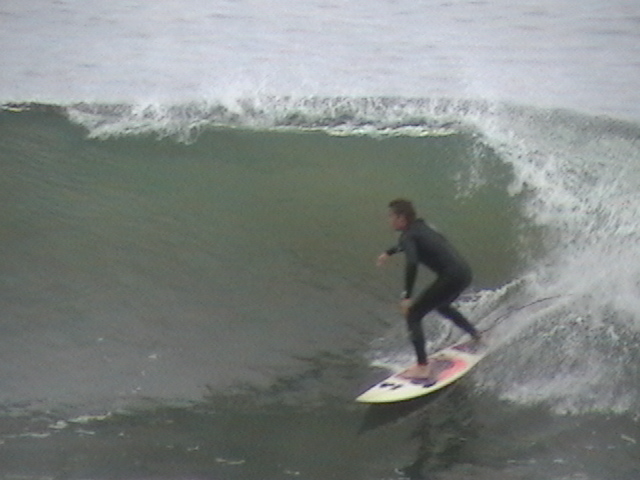Beginner Surfers Catch First Real Waves
Beginner surfers catch first real waves after they have mastered fundamental techniques on foam waves. The basic fundamentals serve surfers through advanced surfing.

Beginner Surfers Master Techniques on Foam Waves
The two main ingredients added are timing and courage. Foam waves break in a long window from the time a real wave breaks until it reaches the beach. A real wave breaks in a small window of a few seconds.
On a foam wave beginner surfers can position most anywhere and catch the wave on the way to the beach. On a real wave, surfers have to know about where they break and position close to that spot. The surfer line up is a good indication of that spot.
Finding Your Spot on Real Waves
Surfers catch real waves at a spot often depending on their board and their skill. The best surfers are riding short boards and sitting where the wave breaks biggest. That places them at the apex so they get the right of way on the wave.
If beginner surfers can’t catch waves and don’t remain riding, the line up is not likely to let them have more waves without cutting them off. Beginner surfers should start with catching real waves as they reform on the way to the beach, at the corners, or in breaks away from where the experienced surfers are sitting.
As beginner surfers catch foam waves, they can paddle out to catch bigger foam waves which is good practice to get used to the impact and speed of waves. In this process, they should try to start catching small real waves and catching them at the corners.
Catching Real Waves
Assuming beginner surfers are still riding 8′ soft tops, as they should, they want to catch waves that are not as steep and catch them at an angle so they don’t pearl. To catch a wave at an angle, the surfer paddles far down the line from the apex (where the foam first comes over a lip) and when no one else is on the wave. The surfer points at a 45 degree angle toward the beach and lets the wave roll under the board as he paddles hard and then pops up.
Timing on a real wave is precise. The surfer has to be in the right spot where the wave arcs and allow the wave to come under the board. As the tail lifts at the top of the wave, the surfer paddles hard three times and as the board heads down the wave, pops up immediately and smoothly.
Beginner surfers will just ride the wave as it breaks and turns to foam. Soon they will want to either point toward the pocket before they pop up or learn the bottom turn to carve into the pocket. The next maneuver they learn is the cut back to reverse direction back to the power of the wave or to head toward the beach as waves close out.
For Oceanside Surf Lessons, see the Home Page
See the Post Search Lessons Teach Fundamentals
See the Post Catching Real Surf Waves
See my Dry Land and in Water Demo video
See my other Surf site for more Posts
I have books on Creating Your Own Happiness on a site called Happiness and Work Life Balance